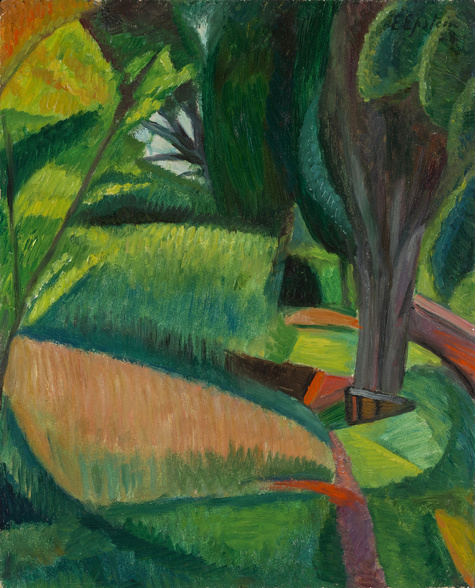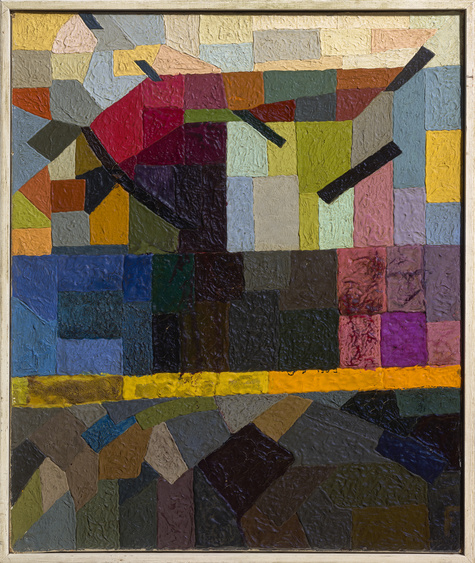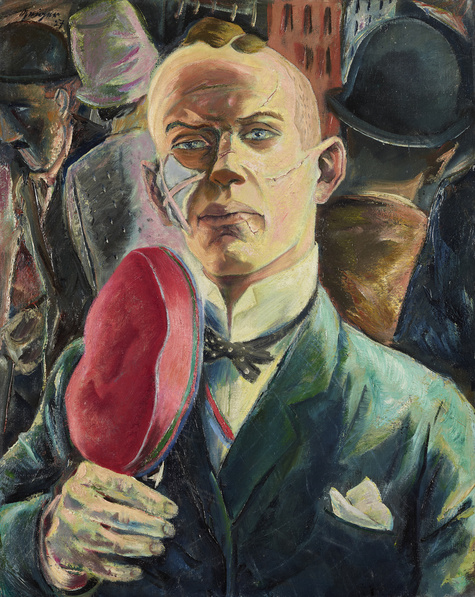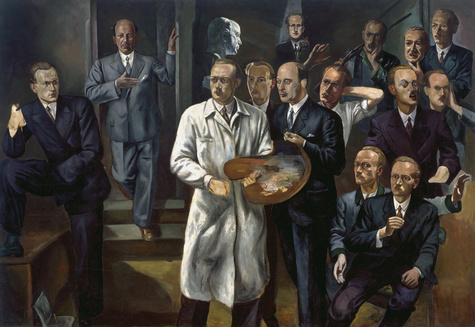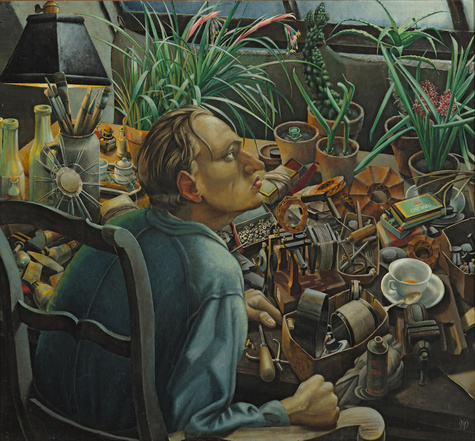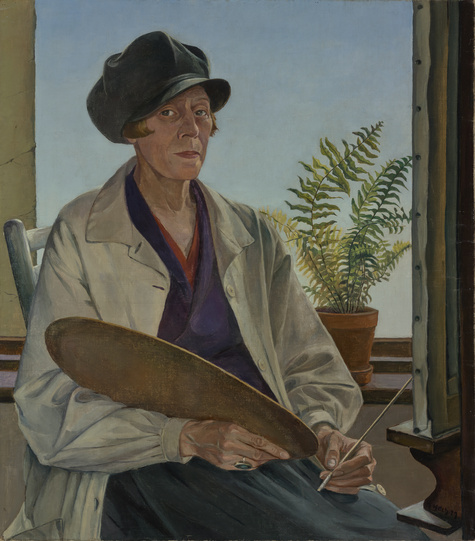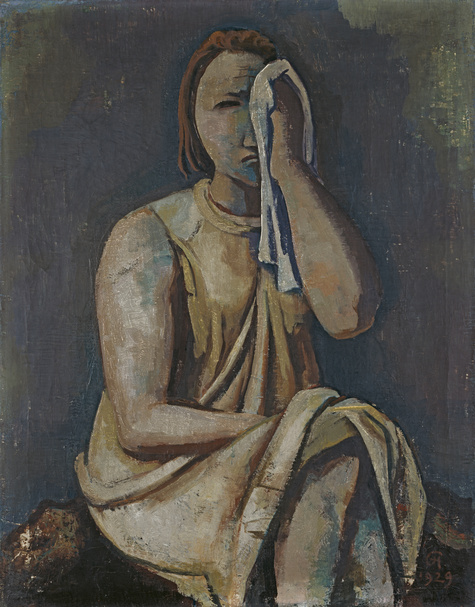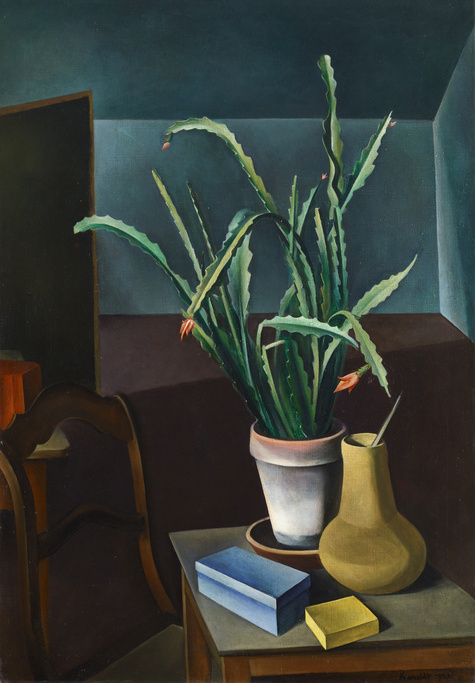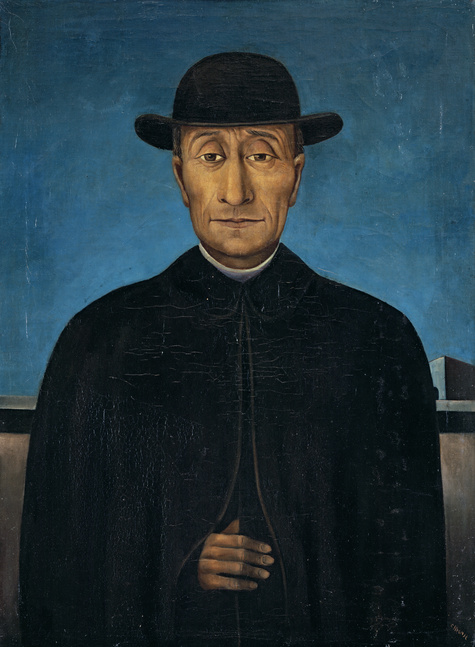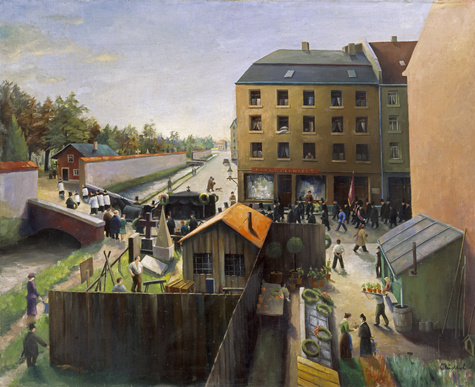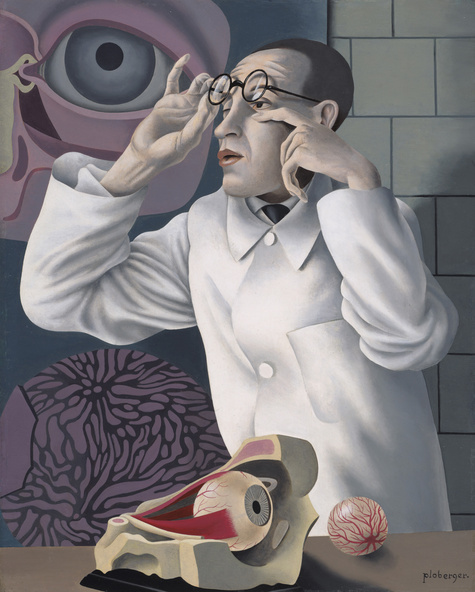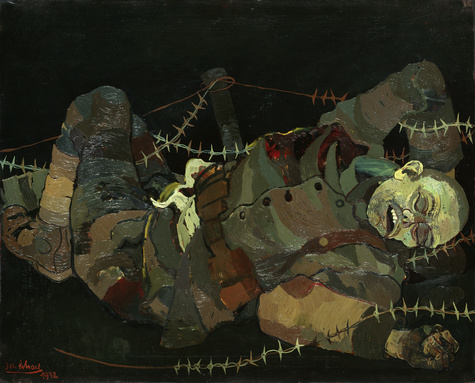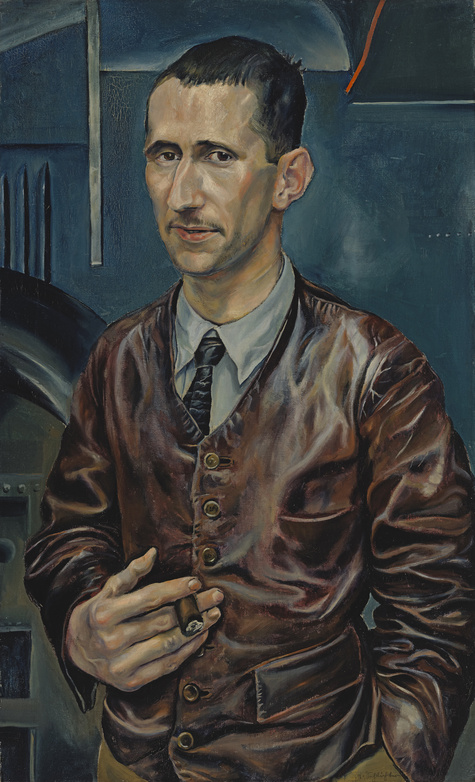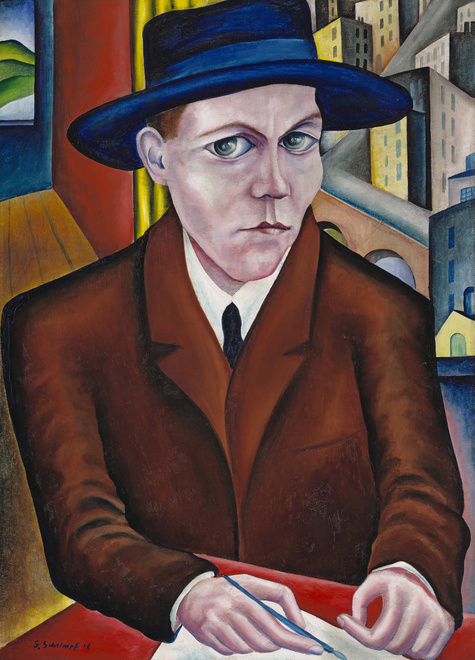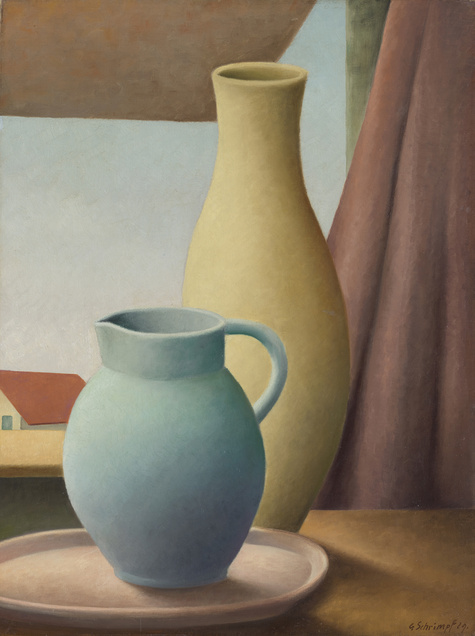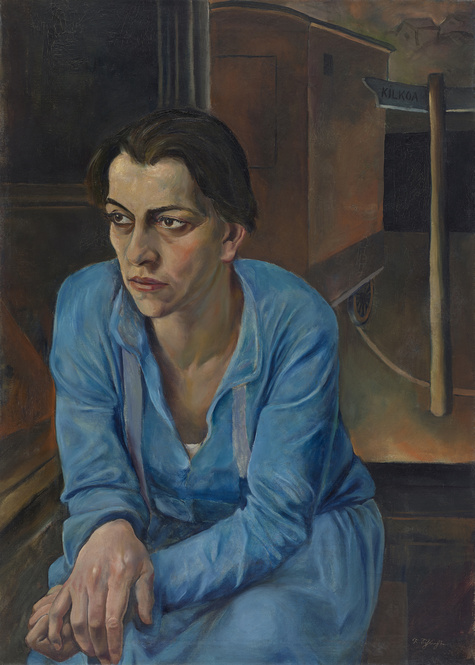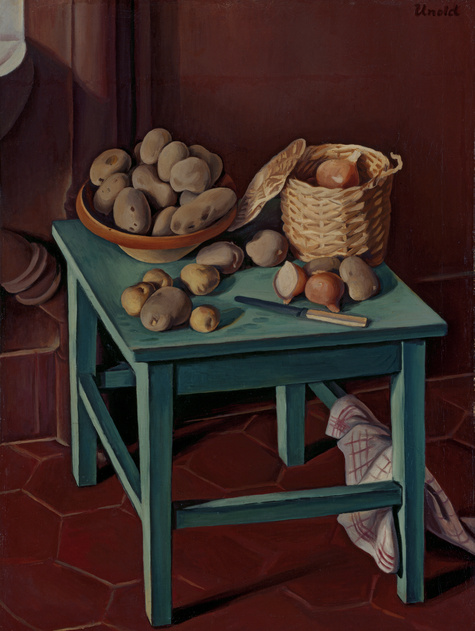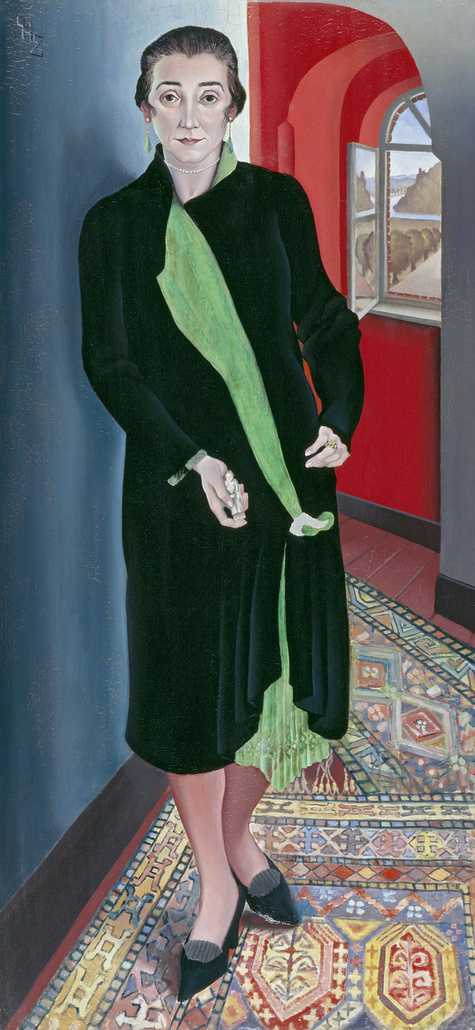New Objectivity
The dominant movement in the Lenbachhaus’s collection of art from the period after World War I is the "Neue Sachlichkeit" or New Objectivity, which is paradigmatic of the art and art politics of the 1920s and 1930s. The era’s abrupt changes and unresolved conflicts are illustrated by exemplary works such as Georg Schrimpf’s "Portrait of Oskar Maria Graf" (1918), Rudolf Schlichter’s "Portrait of Bertolt Brecht" (ca. 1926), Christian Schad’s "Surgery" (1929), Josef Scharl’s "Fallen Soldier" (1932), and Franz Radziwill’s "The U-Boat War / Total War / Lost Ground" (ca. 1938/39 – 60). Unlike names such as "Der Blaue Reiter" (The Blue Rider) or "Die Brücke" (The Bridge), the label New Objectivity was not chosen by a group of artists to express their shared artistic undertaking; it instead describes a characteristic quality art historians and critics recognized in contemporary painting.
The term was coined by Gustav Friedrich Hartlaub, director of the Mannheimer Kunsthalle, and publicized in the title of an exhibition he held there in 1925. It was meant to designate the common denominator of various programmatic tendencies in German art after World War I. The artists of the New Objectivity were united in their effort to return to a sober and realistic rendition of reality; for most of them, that implied taking a critical view of the Expressionism of the prewar years.
Schlichter’s portrait of his friend Bertolt Brecht shows an icon of the 1920s. The angular shapes and cool colors lend the model an air of standoffishness and restrained energy. The poet, a lover of cigars and fast cars — automobile parts appear in the backdrop — is presented as a technology enthusiast, a modern man.
The representatives of the New Objectivity in the Lenbachhaus’s collections may be roughly divided into two camps: on the one hand, artists such as Rudolf Schlichter, Christian Schad, Karl Hubbuch, Christoph Voll, and Willi Geiger tend to articulate a critical view of social realities; on the other hand, Munich painters like Georg Schrimpf and Alexander Kanoldt, influenced by the Italian artists in the orbit of the magazine "Valori Plastici" (Carlo Carrà, Giorgio de Chirico), eschew social criticism and often depict distinctively idyllic scenes. Josef Scharl’s "Fallen Soldier" and Franz Radziwill’s "The U-Boat War / Total War / Lost Earth" address the events of World War I with a view to the artists’ own present-day reality. The multi-part title of Radziwill’s picture suggests the vicissitudes of the history of its creation, reflecting the artist’s shifting artistic and political convictions and the troubled relationship between the artists of the New Objectivity and Nazi cultural policies.
"The New Objectivity is the general tendency that currently prevails in Germany, a tendency of cynicism and resignation as hopes have been dashed. This cynicism and resignation constitute the negative side of the New Objectivity; its positive side is the enthusiasm for objectivity, the desire to treat things dispassionately, as they are, without trying to find some ideal meaning in them."
Gustav Hartlaub 1925
Audioguide about New Objectivity
Only if you agree, you allow us to load data from Soundcloud.
Selected works of artists of the New Objectivity


